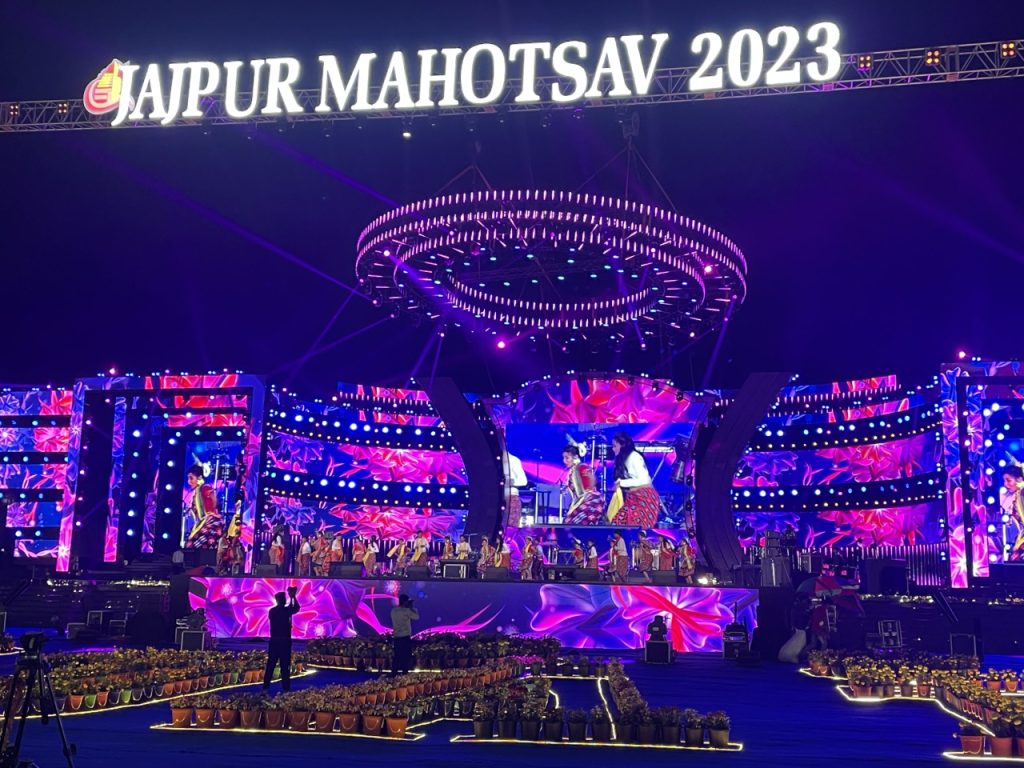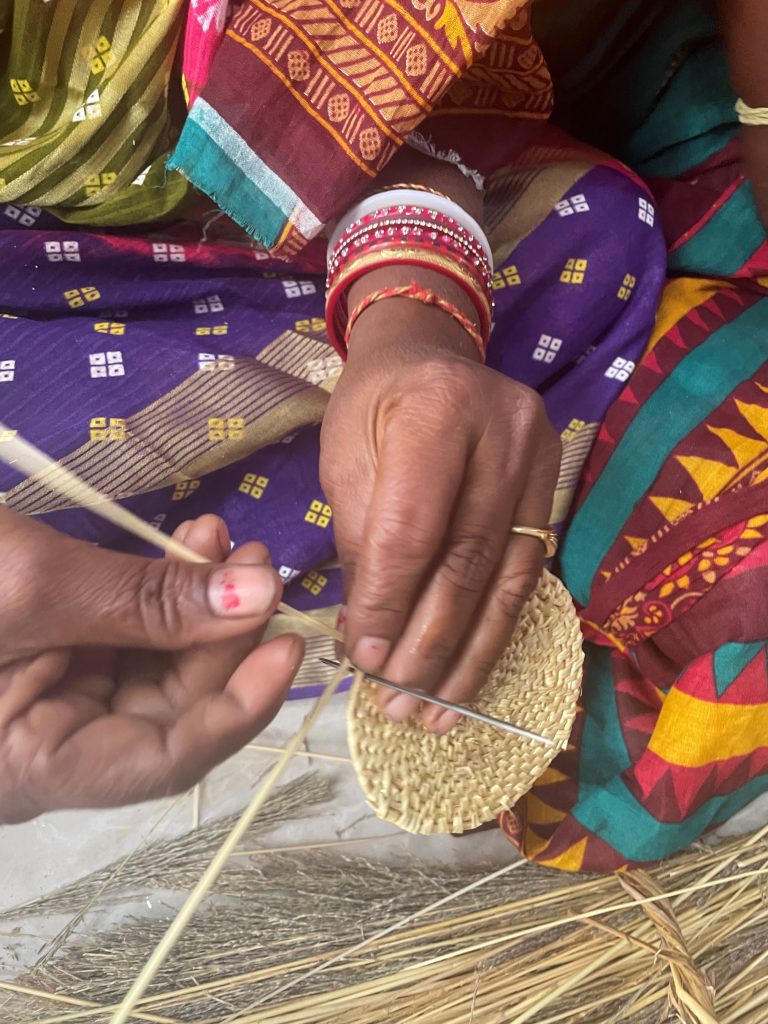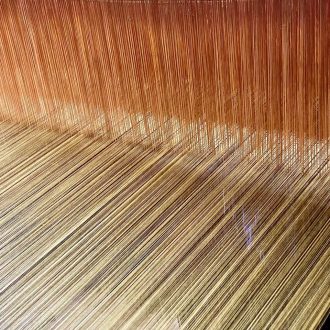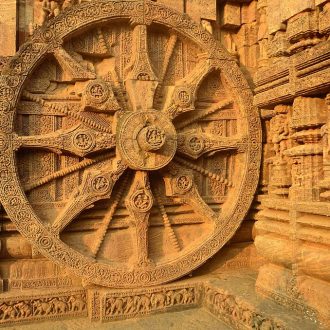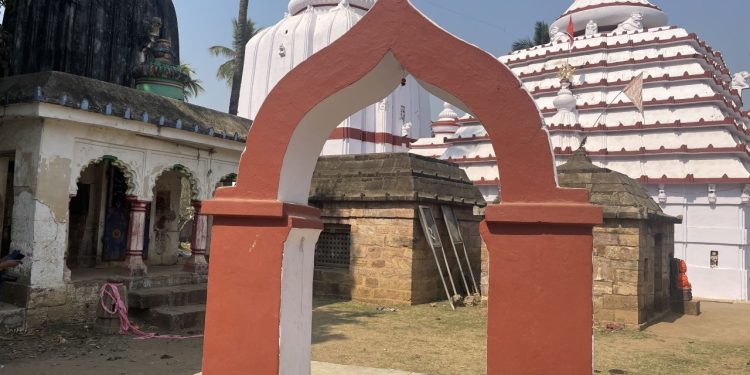
Standing in the corridor of the ancient Sapta Matrika temple in Jajpur in Odisha, and looking out into the open, I see the waters of the Baitarani River burning in the afternoon light. The temple dedicated to the Seven Goddesses – Brahmani, Kaumari, Vaishnavi, Varahi, Narasimhi, Shivaduti or Indrani, and Chamundi has just closed but the priest tells me that the Seven Mothers are the attendants of the principal deity, Maa Biraja and they protect the entire town of Jajpur. He adds that the Dashashwamedh Ghat on the banks of the river, where the temple is also located is where Jajpur’s story also begins. Adding to the voice of the priest, our guide Samantha takes us on a short history class and gives us a list of Jajpur tourist places from ancient temples like Maa Biraja Temple to the temples around Dashashwamedh Ghat and explains some of the things to do in Jajpur as a heritage tourist enthusiast.
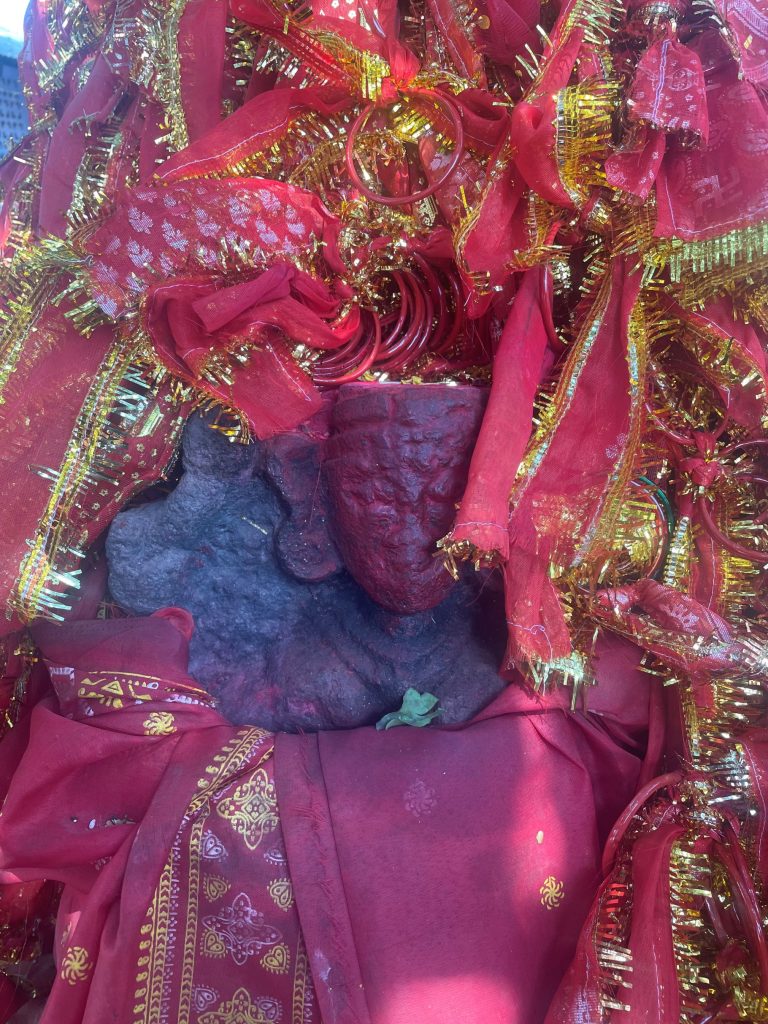
History of Jajpur
Jajpur was the capital of King Jajati or Yayati of the Somavamshi or the Kesari Dynasty who ruled from modern-day Jajpur or Abhinava-Yayatinagara or Jajapura, as it was called them from the 9th-12th centuries. King Jajati, it is said, had organized a great yajna here on the very ghats across the river and the town came to be known as Yajnapura. But Jajpur’s history dates back to the prehistoric era and the Puranas have referred to it as Viraja and the river as Baitarini Tirtha, one of the most important tirthas of India. It is even mentioned in the Mahabharata where the Pandavas had purged themselves in the holy waters of the Baitarini.
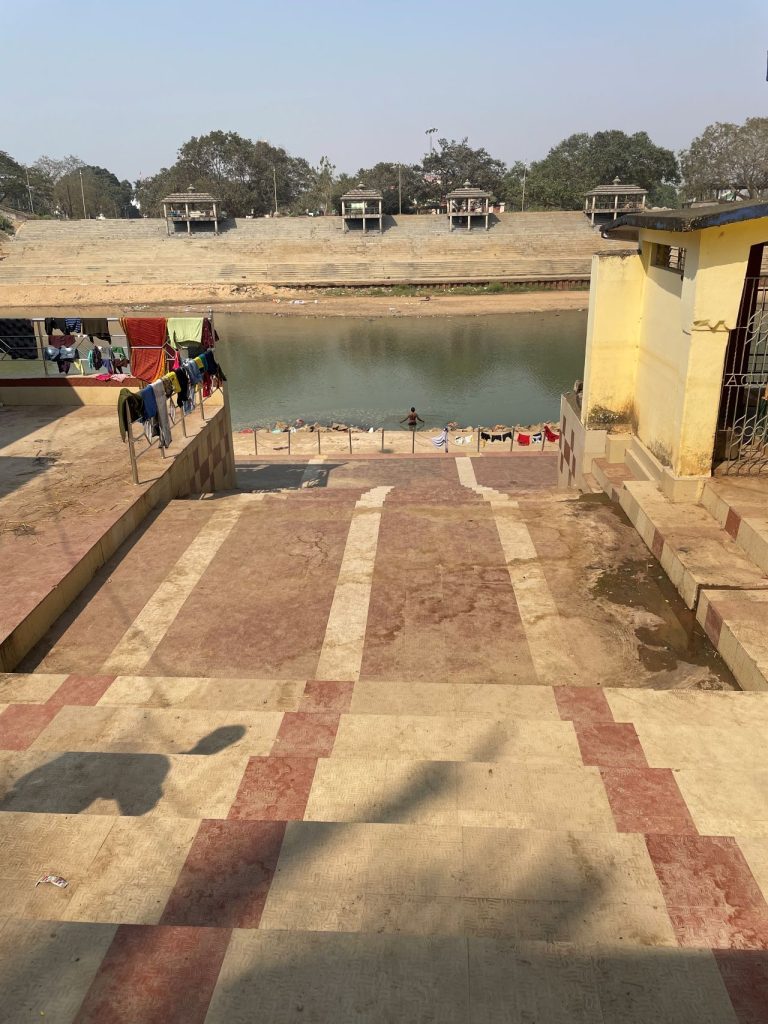
Odisha Revisited
This is not my first trip to Odisha or to Jajpur, although I must say that I was not aware of the rich heritage and culture of Jajpur when I had come to Odisha a decade ago. I have written about Jajpur in detail in my newsletter Journeys and Jottings and if you haven’t subscribed to it, a heartfelt request to do so (it’s free as well), To cut a long story short, I was exploring the ancient temples of Bhubaneswar when I heard about three excavated sites on hillocks that were filled with ruins of Buddhist monasteries and stupas. It was believed that the Chinese traveller , Hieun Tsang, had explored the Buddhist sites also called the Diamond Triangle of Odisha, and I wanted to follow in his footsteps. And that is how I landed in the district of Jajpur a decade ago. You can read about the historic Buddhist sites of Ratnagiri, Udayagiri, and Lalitgiri here. which are one of the Jajpur tourist places
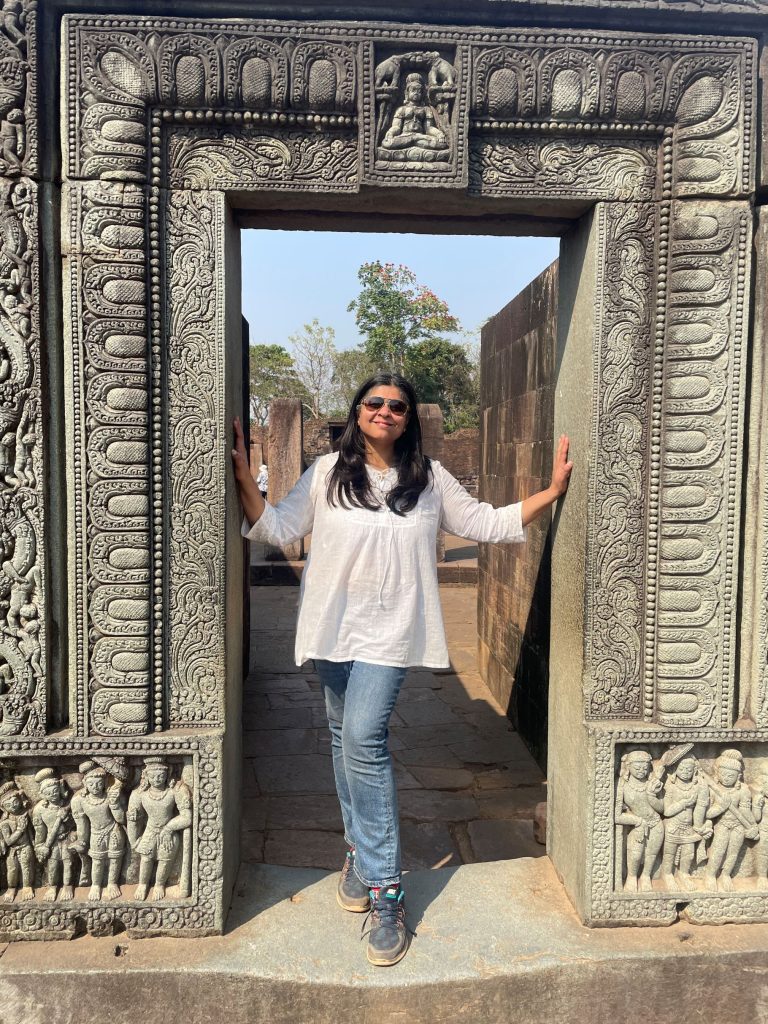
Jajpur District
Jajpur is the name of both the town and district in Odisha and it is a treasure trove of heritage, arts and crafts, and culture and has several Jajpur tourist places that are yet to be explored in detail. The ancient capital of many dynasties that ruled over modern-day Odisha, Jajpur has been of significance to Hindus, Buddhists, and Jains from a historic and religious perspective with several archaic, time-worn, and primeval temples, monasteries, excavated sites, and monuments. Located about 120 km from Bhubaneshwar airport and closer to the twin cities – (Bhubaneshwar and Cuttack), Jajpur is Odisha’s best secret and is waiting to be discovered.
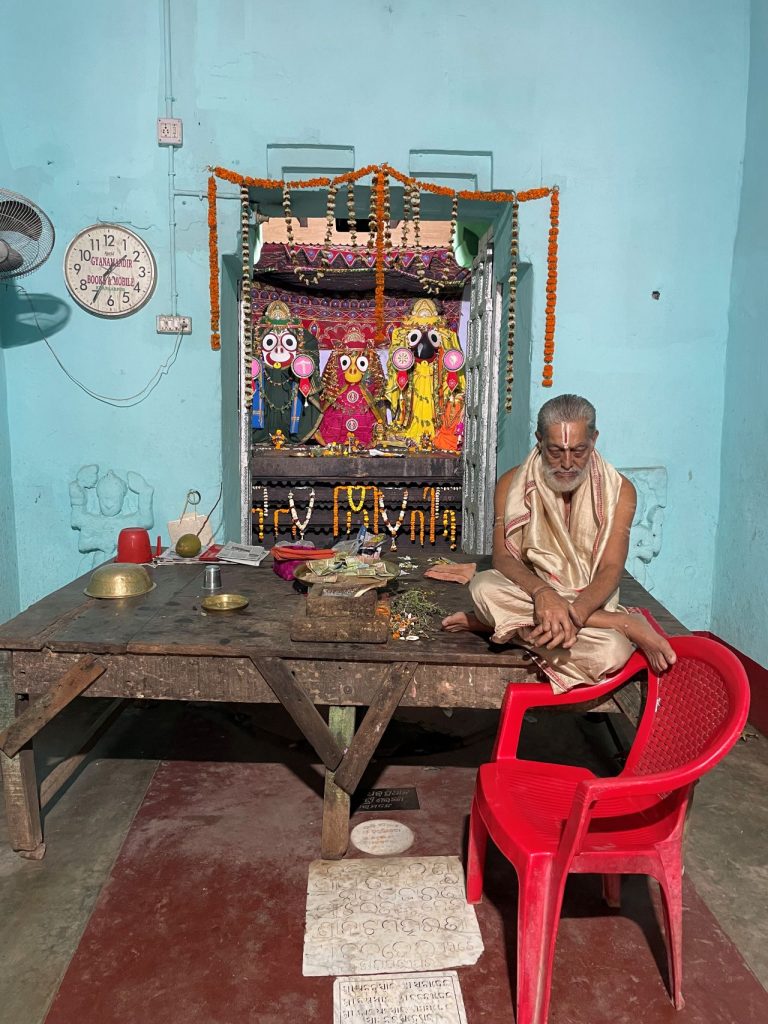
HACT Jajpur – Why is Jajpur Famous?
In three days we had a glimpse of the heritage, arts, and crafts of Jajpur and the immense tourism potential that it has. I was invited by the district administration who had brought in management consultants Ernst and Young (E&Y) to build Brand Jajpur. And I was personally surprised to see that the administration was taking this initiative with the help of a consulting firm to promote and put it on the tourist map.
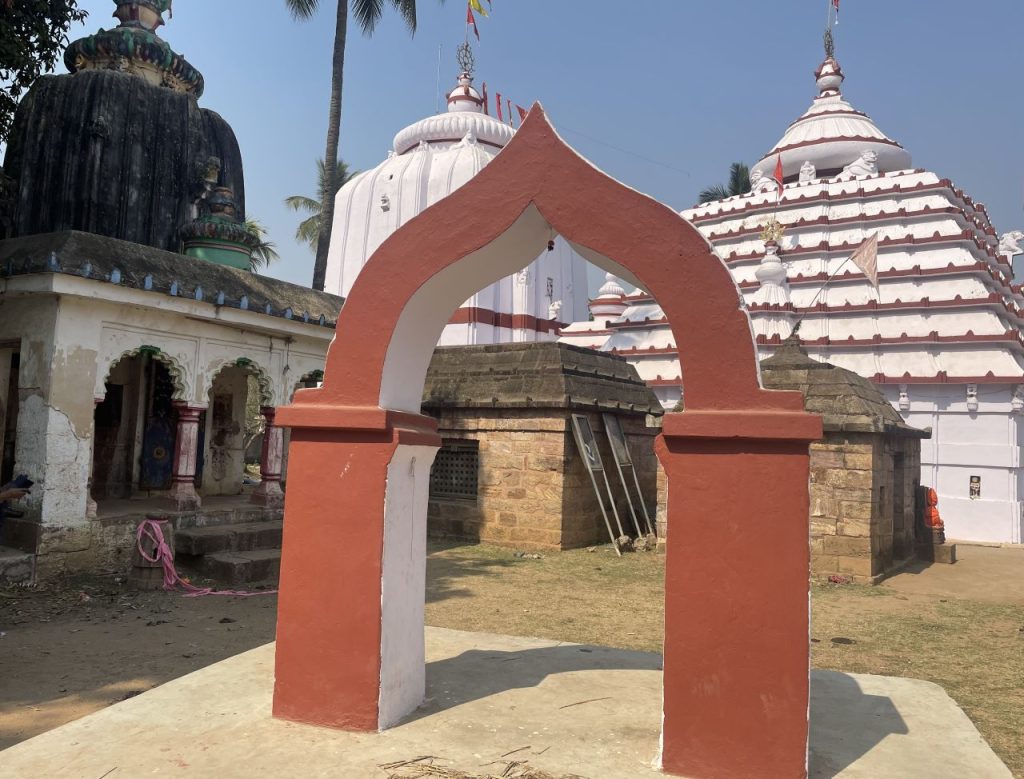
Jajpur Tourist Places
To the first-time traveller, Jajpur is disarmingly simple and has a nonchalant air around it. I found it raw and rustic, like any other town or district initially, lost in its own obscurity. To the untrained eye, it seems like Jajpur is a cluster of towns and villages in the rural hinterland of Odisha. But as you see it with a pair of new eyes and fresh perspectives and look beyond the obvious, you realize that it is a treasure trove of ancient history. It’s like peeling layers off an onion. Every layer reveals a facet of its heritage and culture. And you feel like you are on a treasure hunt, discovering not just the sites but also the chronicles of history, from prehistoric times. It’s a microcosm of Odisha itself with a plethora of cultural traditions and lost arts and crafts and untold stories.
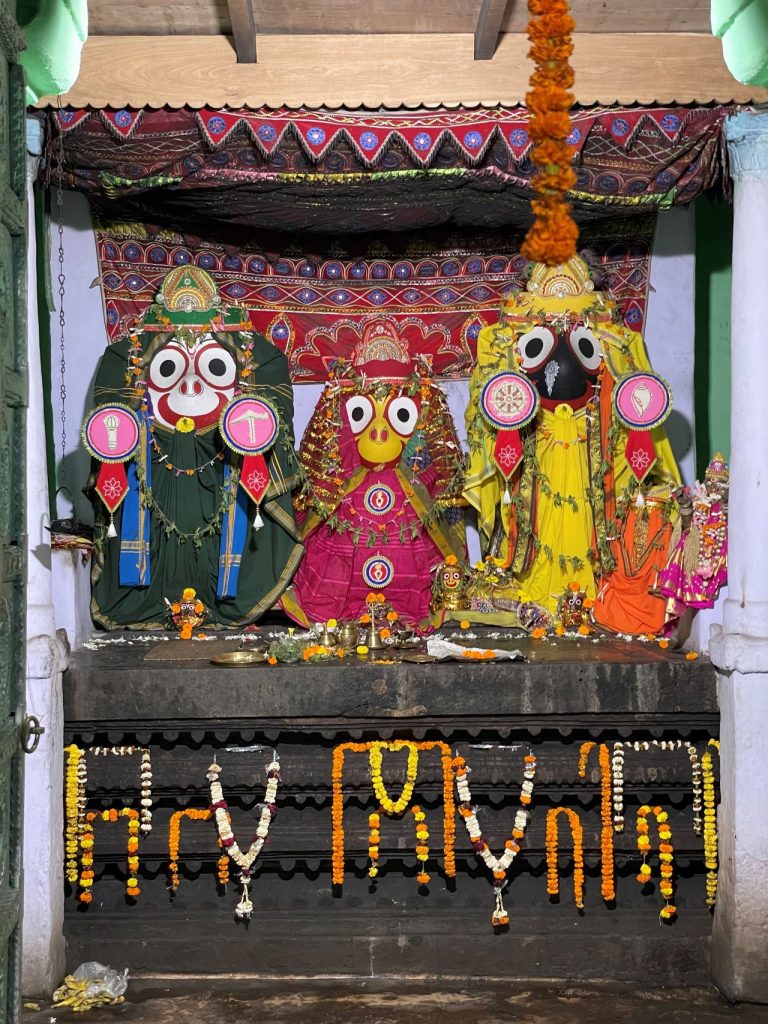
Things to do in Jajpur
Sample this for a moment
- Jajpur is the capital of several dynasties of Odisha and it has even found mention in the ancient texts and Puranas
- The Maa Biraja Temple is one of the 51 Shakti Peeths in the country and Goddess Durga who is worshipped as Biraja is the patron deity.
- There are over millions of Shiva Lingas found everywhere – excavations to hidden temples and Jajpur is called the land of the Koti Lingas
- Besides 1000(s) of temples, there are 15 Buddhist and 6 Jaina sites in Jajpur which are some of the Jajpur visiting places.
- The Buddhist sites showcase architecture that dates to the early first millennium and has been penned by Chinese traveller Hieun Tsang.
- Jajpur is the home of weaving, especially tussar silks – there are over 1700 registered weavers in Gopalpur alone which has about 700 households and is over 400 years old. Gopalpur tussar also has a GI tag attached to it.
- Jajpur is also home to several unique crafts and craftsmen and women and weavers – there are over a hundred stone sculptors, golden grass weavers, bamboo grass artisans, and terracotta potters besides painters, musicians, singers, dancers, and folk artists and performers.
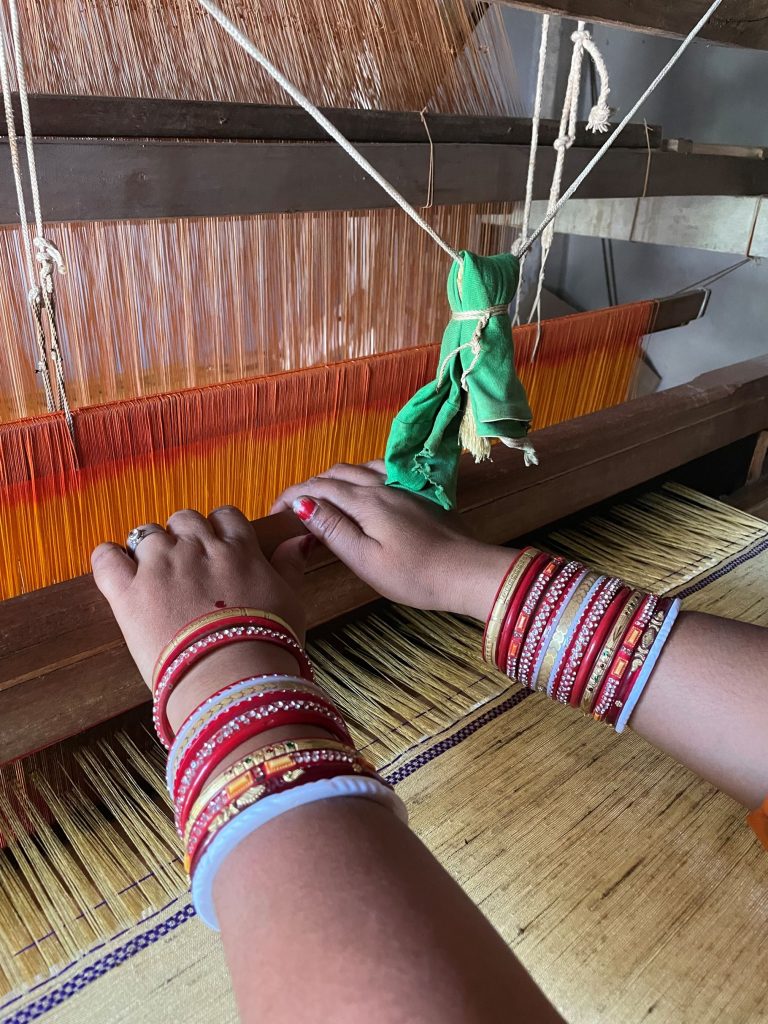
Temples of Jajpur
When we think of Odisha, the Puri Jagannath temple comes to our mind along with the architectural wonders of Konark Sun Temple. Bhubaneshwar has several ancient temples too including the divine Lingaraja Temple. Steeped in antiquity, the heart of Jajpur lies in its ancient temples too with unique traditions, legends, rituals, and festivals. There are several temples in Jajpur – we visited three main temple complexes which had several shrines around them. The Maa Biraja temple, which is one of the Shakti Peethas is dedicated to Goddess Durga who is worshipped as Biraja Maa or Girija as Adi Shankaracharya had consecrated the deity. One of the largest temples in Jajpur, Maa Biraja is the presiding and patron deity of Jajpur and you can feel the divine energy here.
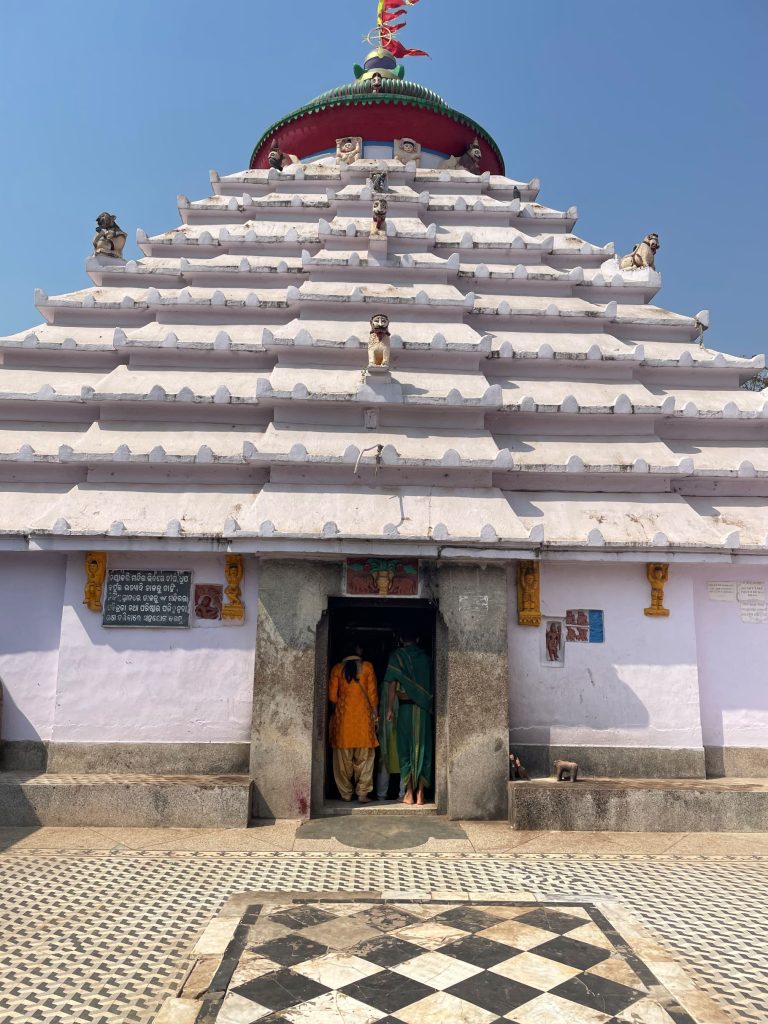
Maa Biraja Temple – Shakti Peetha
Maa Biraja is the very epitome of the Shati cult and the immaculate deity is the incarnation of Goddess Parvati or Sati and the first mother goddess according to the Vedic Puranas. Located on the banks of the Vaitarani or the Baitarani River , the temple has been in existence since the Gupta era, although the Goddess has been worshipped in the forms of an altar and a pillar Goddess as it was in those days. The present temple was built much later in the 13th century in the Kalinga style of architecture. Although Maa Biraja Temple is known more as a pilgrimage destination, it is now one of the primary Jajpur tourist places.
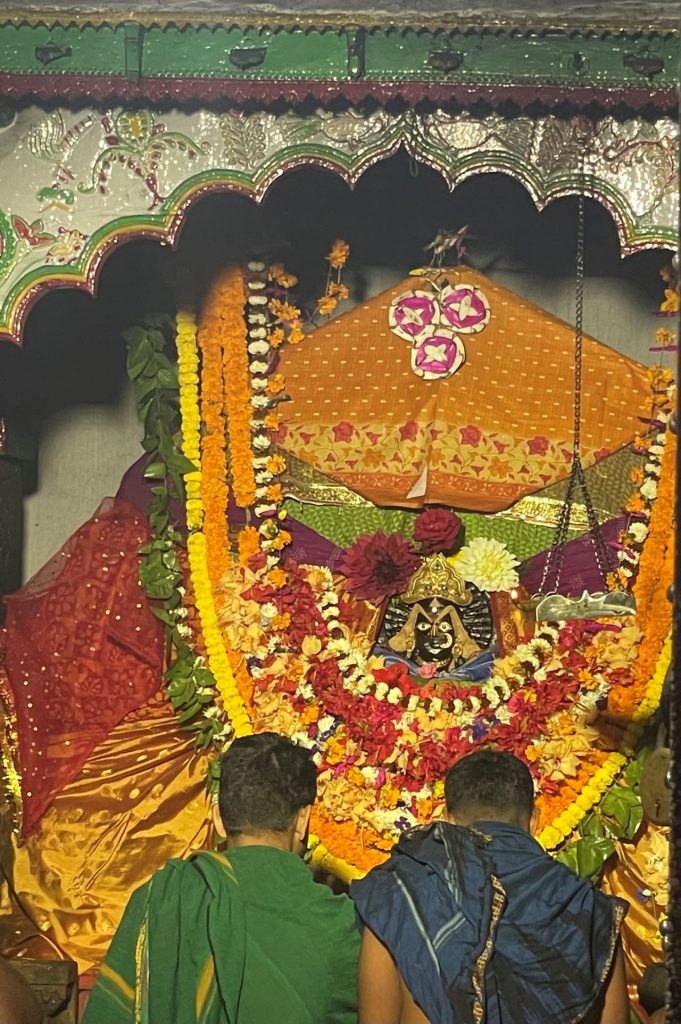
While there are 108. 64 or 51 Shakti Peethas as some ancient religious texts indicate, 18 of them are indicated as Ashtadasha Peethas. As per the Puranas, Maa Shakti as Sati was born to Daksha, the king who married Bhagwan Shiva against her father’s wishes. The king then performed a yagna and did not invite both of them but Sati attended the same without any invitation. As she could not bear her father’s humiliation, she jumped into the sacrificial fire and self-immolated. Lord Shiva in his anger took the form of Veerbhadra and beheaded Daksha. He then in his anguish carried Sati’s corpse and performed the cosmic dance that led to the destruction of the universe. The Gods then sought Bhagwan Vishnu’s intervention who used his Sudharshan Chakra on Sati’s corpse. The parts of the body fell on different parts of the earth and these areas came to be known as Shakti Peethas. Adi Shankaracharya’s sloka on Shakti Peetha Stotram also mentions the list of the Shakti Peethas. Besides India, it is believed the Shakti Peethas can be found in other countries like Nepal, Srilanka, Bhutan, and also Pakistan.
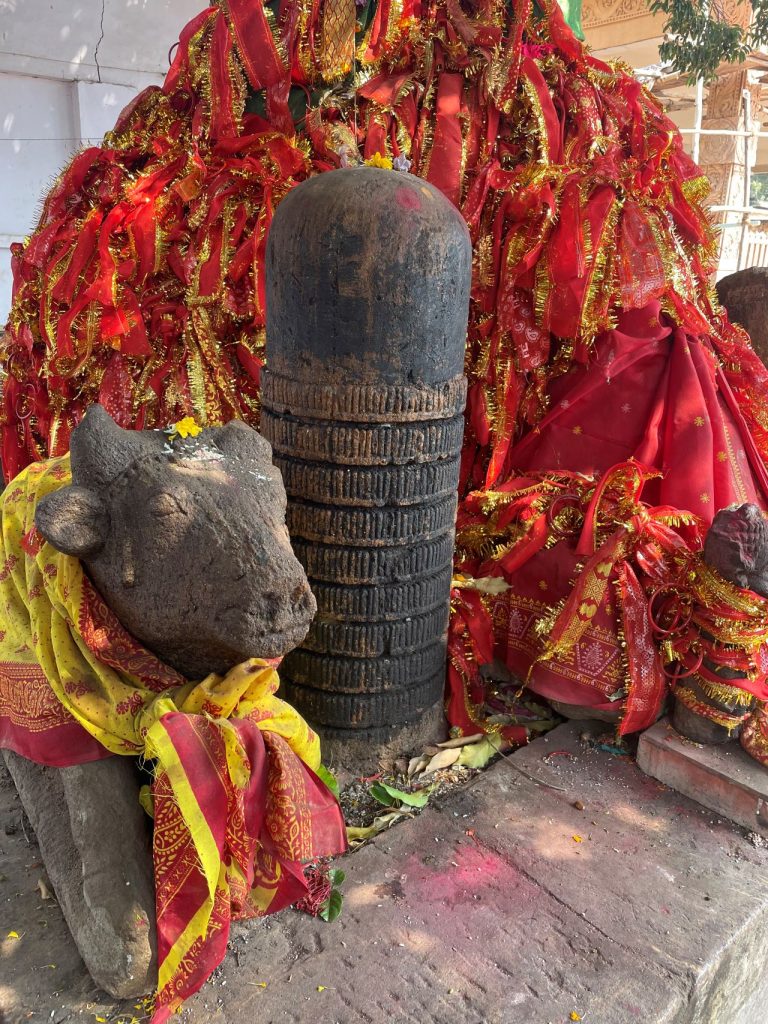
It is believed that the Nabhi or the navel fell in this part of Jajpur and the temple was built there. This is also the only Shakti Peeth where you can offer “pind daan” or offerings and oblations to ancestors and parents who have passed away. The Nabhi Gaya is a well of offering which is fathomless. According to another legend, a demon named Gaya prayed to Bhagwan Vishnu and became a pure soul when he was liberated. When Bhagwan Brahma did a yagna, Gaya’s body was used for sacrifice and he requested that the Trinity remained at the three places where his body lay which were referred to as Pitr Shetras. As his navel or Nabhi was by the banks of the Bijrani River and the Yagna or the ceremonial sacrifice was performed by Bhagwan Brahma himself, it is believed that the deity resides in this place. It is believed that the ancient Biraja Kṣetra turned into a Pitṛ Tīrtha and Nabi Gayā and evolved out of the navel of the demon Gayā. Some Puranas blend both legends as well and you can hear different versions.
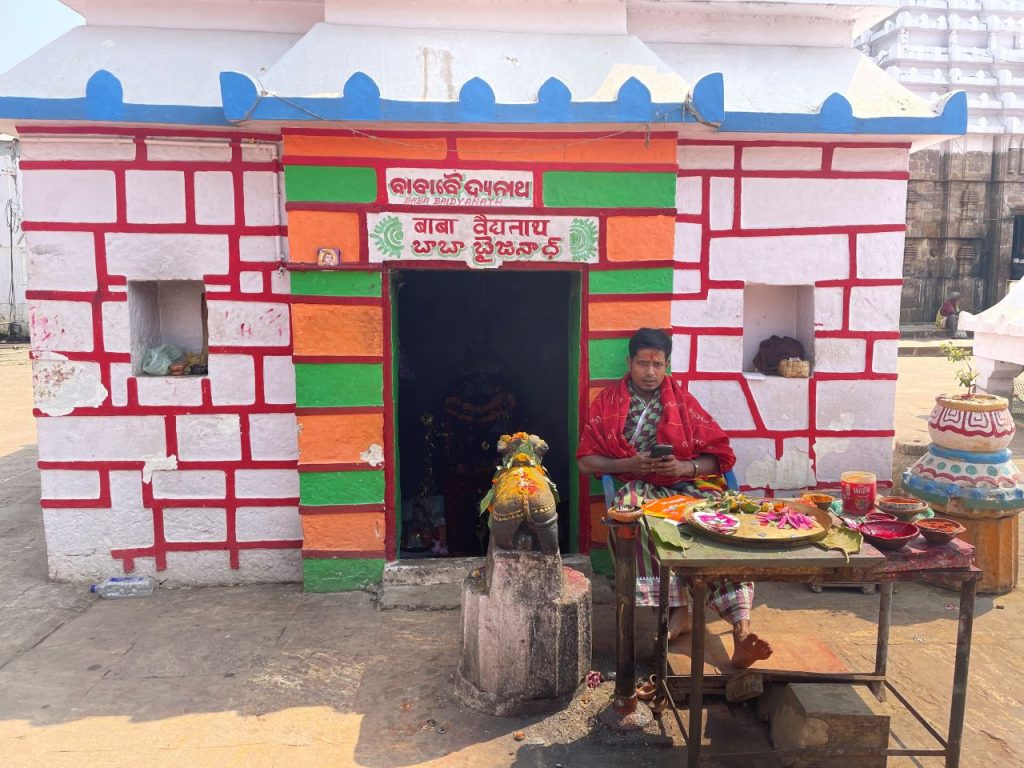
The temple complex has several smaller shrines dedicated to the Hindu pantheon of Gods and Goddesses but mainly Bhagwan Shiva and Maa Shakti are the main deities. Sculptures and carvings, including mandapas and an old temple tank can be seen here. There are four gates and at the entrance of one of them, you can see two rooms filled with Shivalingas, some of them are Sahasralingas – miniature Shivalingas carved on a single larger Linga.
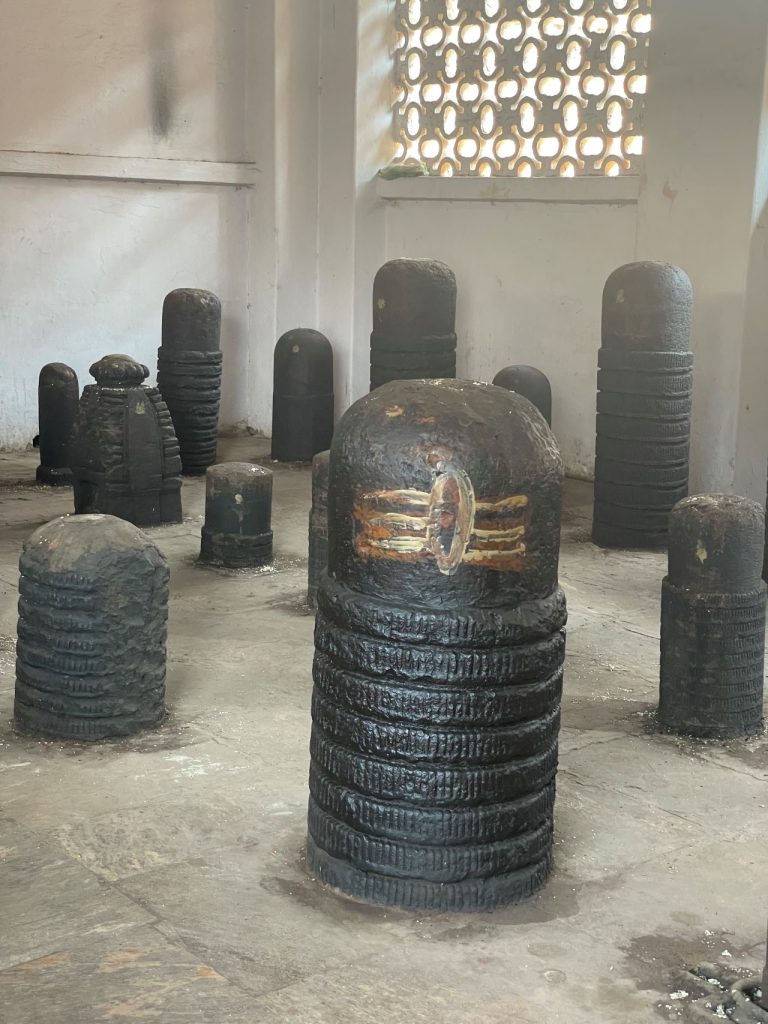
At the entrance of one of the gates, you can see a Bakul tree with sculptures of Shiva Linga and the Maa Shakti. According to the local belief, the priest ties a red cloth over your head and then devotees can make a wish and tie a small red ribbon with red bangles on the branches of the trees. It is believed that the red ribbon is part of the attire of the goddess and you can buy them from the priest. Once the wishes are fulfilled, the devotees return here and take the ribbon they have tied and let it float in the river. I did the same and I do hope I can go back to Jajpur and the temple soon again to complete the rituals.
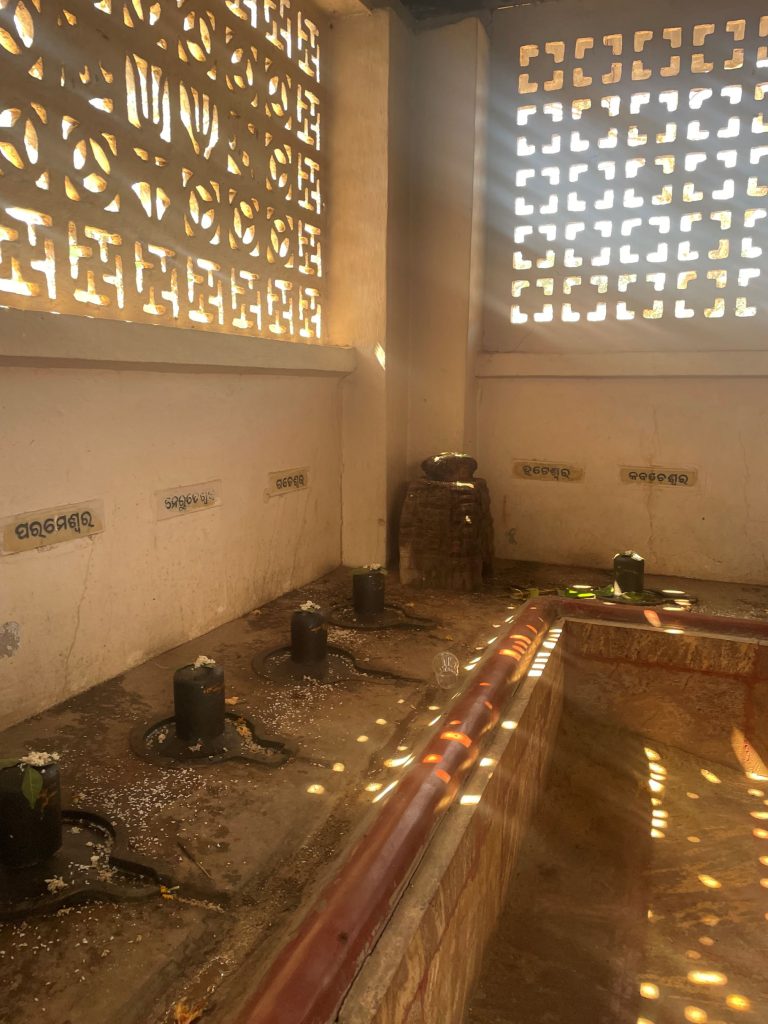
Barahnath Temple and Surya Bhagwan Temple
The second cluster we went to was the Varaha or the Barahnath temple dedicated to Bhagwan Vishnu as Varaha ( the avtaar or in form of the boar) and you can also see a brightly painted Surya Narayana temple here with the Navagrahas or the Nine Planets as well on the outer wall. Surya Bhagwan is depicted as seated on a chariot driven by seven white horses.
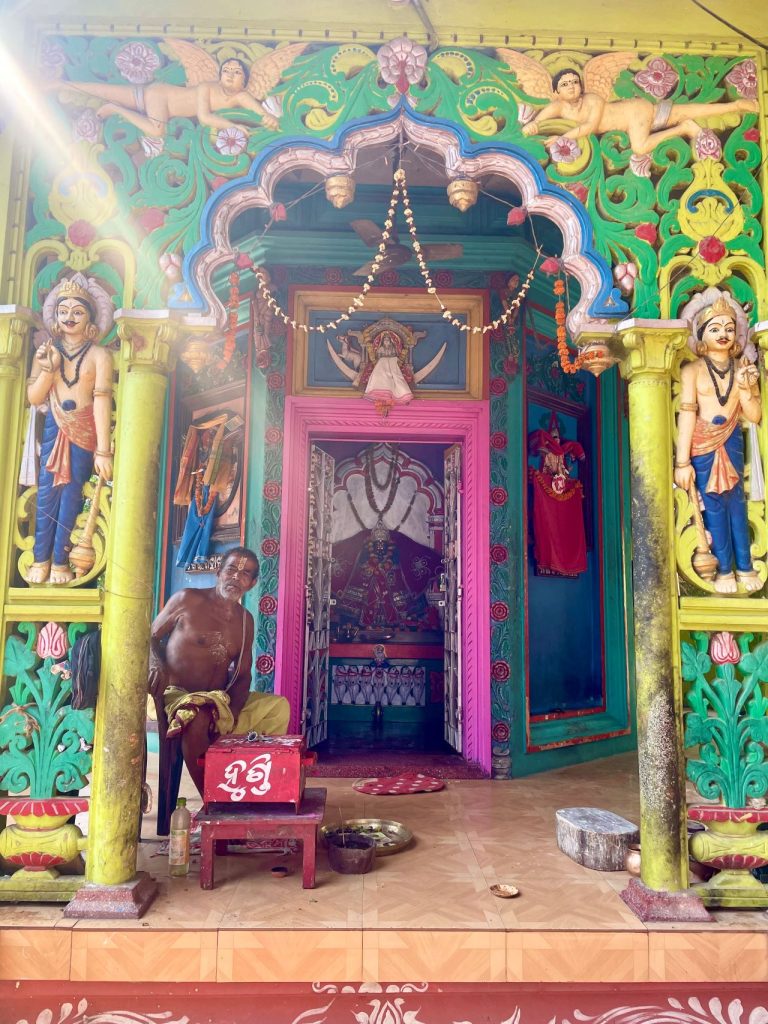
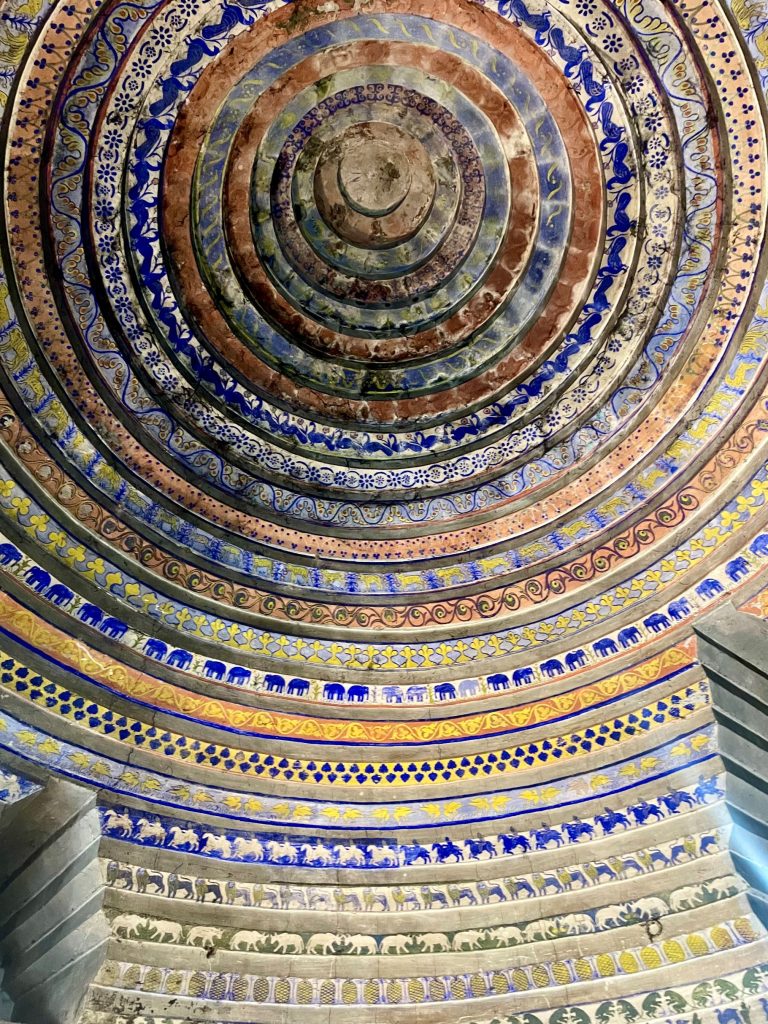
The ceiling art at the Yajna Varaha Temple as its called is stunning while the entire temple complex has several smaller shrines as well. Located barely 5 km from the Maa Biraja temple, this temple complex is also located on the banks of the river and is one of the Jajpur visiting places.

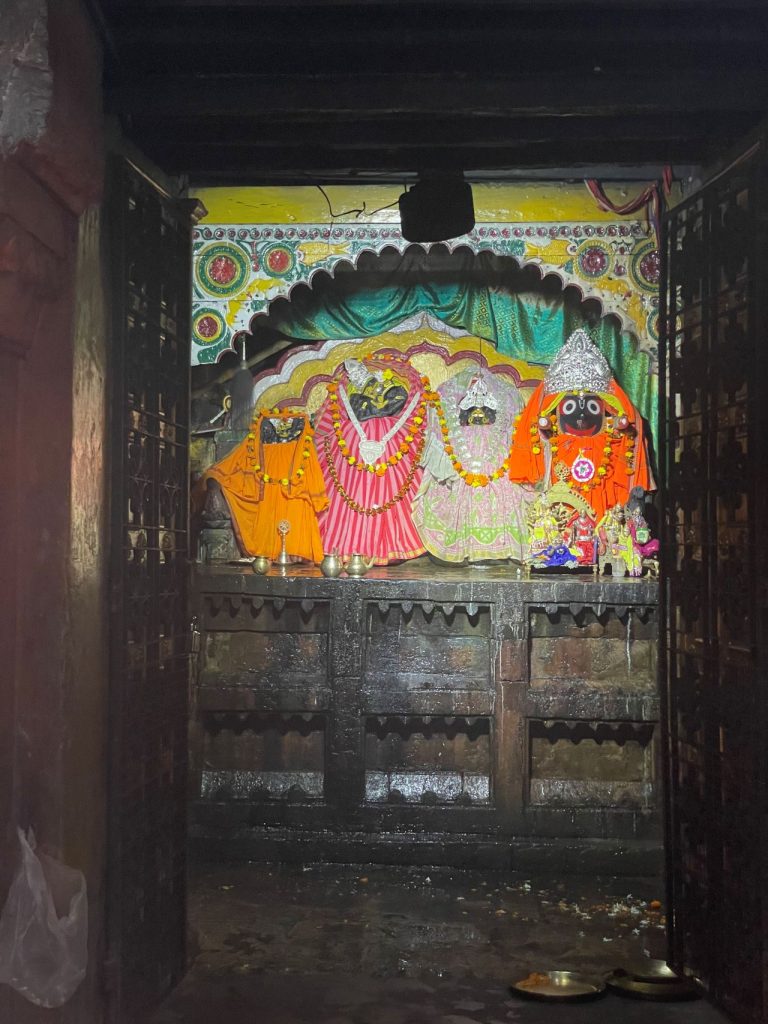
Jagannath Temple and temples aroumd Dasaswamedha Ghats
The third cluster is around the Dasaswamedha Ghats with old temples dedicated to the Goddesses Lakshmi and the Sapta Matruka. You can also see temples dedicated to Maa Savitri, Ganeshji and Bhagwan Shiva as well.

But the main temple here in this complex is the shimmering Jagannath Temple in white built originally by the King Anangabhimadeva of the Ganga dynasty. The temple was rebuilt after it was destroyed during the wars. You can still see remnants of the original temple here. The temple which is believed to be the second abode of Bhagwan Jagannath and his siblings leads to the Dasaswamedha Ghats, where cremations also take place today, like in the Dasaswamedha Ghats of Varanasi. It is believed that ancient sculptures were found by the river banks recently as my guide Sumanthji adds that these idols may have been thrown in the river during times of war so that they can be protected from being destroyed.
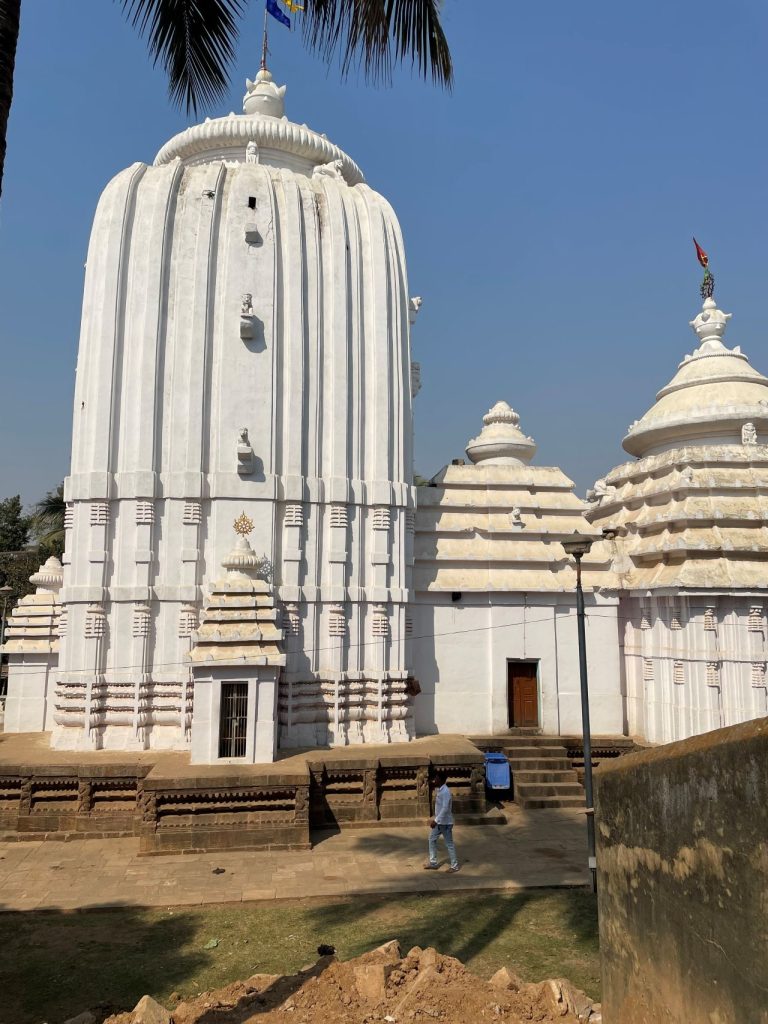
Jajpur is also referred to as Tantra Khetra or Kshetra and the feminine Shakti energy is omnipresent everywhere. Some of the sculptures of the deities, especially the goddesses remind me of the carvings in the Chausath Yogini temple in Hirapur near Bhubaneshwar. A tall sculpture of Shiva is under construction here as well. The temples are not just religious monuments – they are souvenirs of the ancient rituals and traditions and they hold a mirror to the artistic talents of the sculptures of the era and they take you on a journey to the historic past as well.
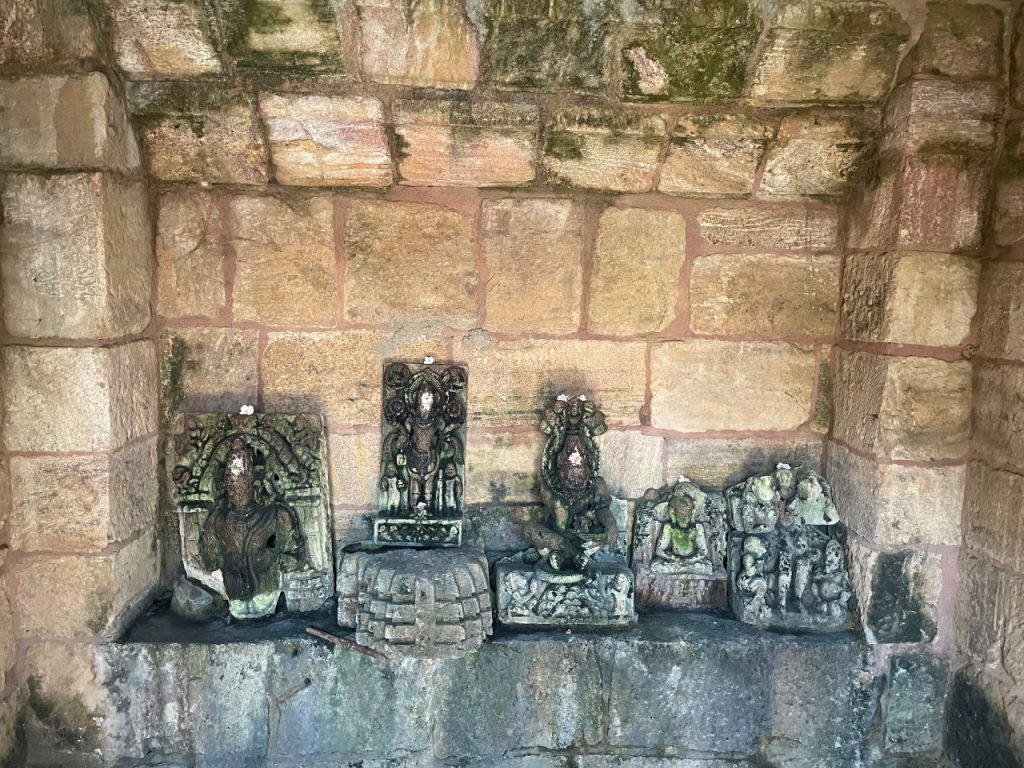
Steeped in antiquity they have an aura of ancient times and almost make you feel like you are in a different era, without the trappings of the modern period. While visiting temples is one of the main things to do in Jajpur, you can also explore other monuments like step wells and temple tanks around them and understand more about the architecture.

Buddhist Excavated Sites – Ratnagiri and Udayagiri
Jajpur is not just a pilgrimage destination for the Hindus. Hieun Tsang or Xuanzang, the Chinese traveller mentioned Jajpur in his chronicles when he visited the Buddhist sites – Ratnagiri, Udayagiri, and Lalitgiri. As I mentioned earlier, I followed in his footsteps and came to Jajpur for the first time almost a decade ago. It is my third time here and I am, as always mindblown by the massive sculptures and carvings in these excavations. These excavations are now getting popular among tourists as they are included in an itinerary among Jajpur visiting places.

The courtyard is filled with heads of Buddha
The Buddhist triangle also called the Diamond Triangle of Odisha refers to the hills of Ratnagiri, Udayagiri, and Lalitgiri where remains of ancient Buddhist monasteries and stupas. Strewn around with monasteries, stupas, relics, seals, stone tablets, and statues, these hills were referred to as Ratnagiri, or the hill of precious gems, Lalitagiri, or the red hill and the Udayagiri, the hill of the rising sun. It is believed that Hiuen Tsang in his chronicles referred to the Diamond Triangle of Odisha as “Pusipokili, a place of learning perhaps referring to ancient Pushpagiri University that can be compared to the likes of Nalanda. It is now believed that he is referring to the Diamond Triangle of Odisha- Lalitgiri, Ratnagiri, and Udayagiri where the university was once located. While Ratnagiri and Udayagiri are in the Jajpur district, Lalitgiri is in Cuttack.
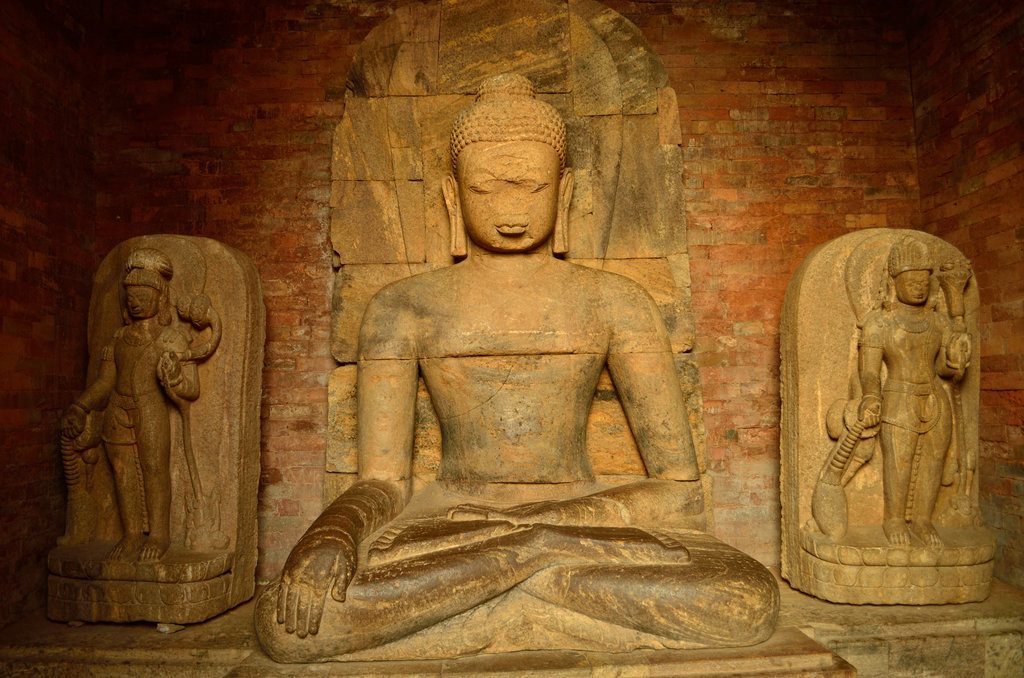
A carving of Buddha in Ratnagiri
In Ratnagiri, you can see two monasteries and one large stupa followed with several smaller votive stupas which were all built in the period between the 5th-13th centuries. Terracotta seals were discovered here bearing the name “ Ratnagiri.” According to historians, Ratnagiri was established around the 5th century by the Gupta kings and the region flourished till the 13th century. It housed a Buddha monastery which was built in the 5th century. The ornate door, carved in green granite and filled with sculptures leads me to a courtyard that has more sculptures of Buddha as well.
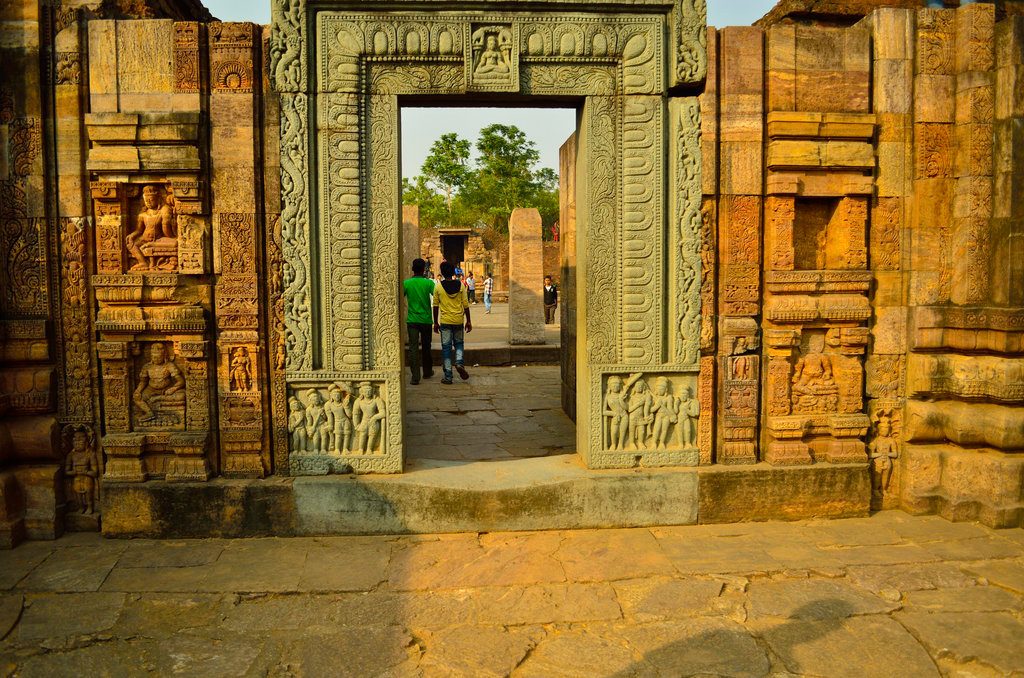
The ornate door to the first monastery
Udayagiri is the largest excavated site with two parts-Udayagiri 1 and Udayagiri 2. Udayagiri known as Madhavapura Mahavihara was a prominent center of Buddhism between the 7th and 12th centuries. You can see several stupas, monasteries and sculptures from the Buddhist pantheon of deities lying in the open. There is a Chaitya Griha here with several smaller stupas. You can read more about Ratnagiri and Udayagiri on my blog here.
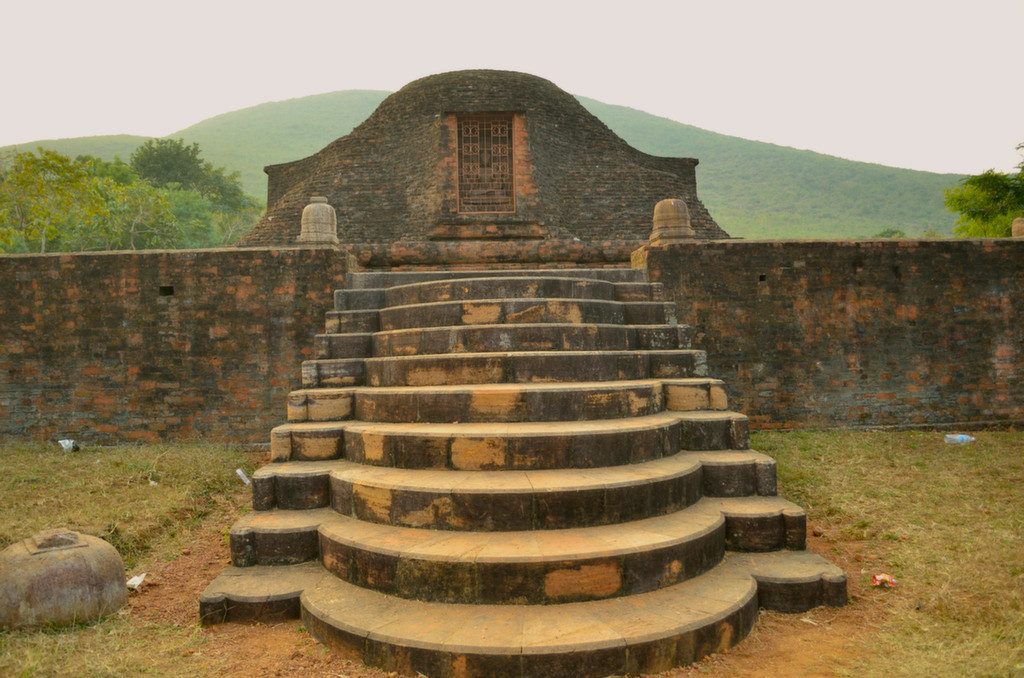
All the three sites were once sites of prominence, now not even in tourist maps
Arts, Crafts and Rural Tourism of Jajpur
When you think of Odisha you think of the colourful patachitra and sand art. Every village in Jajpur is a Raghurajpur in the making and has the potential of becoming a heritage and crafts village. The talented craftsmen and women of Jajpur are prolific in every art and craft, be it sculpting or weaving. There are crafts handmade with golden grass and bamboo as well. There are potters and painters, musicians, singers, dancers, and folk artistes. Weaving is one of the main occupations of most of the villagers from Jajpur, especially tussar silks.
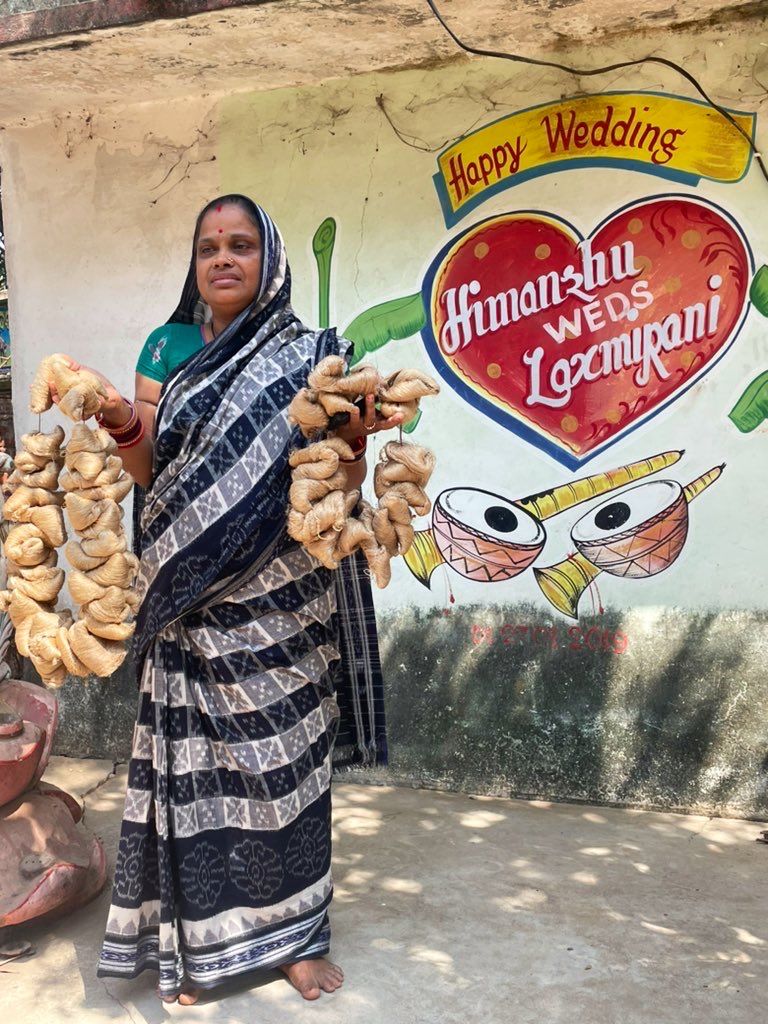
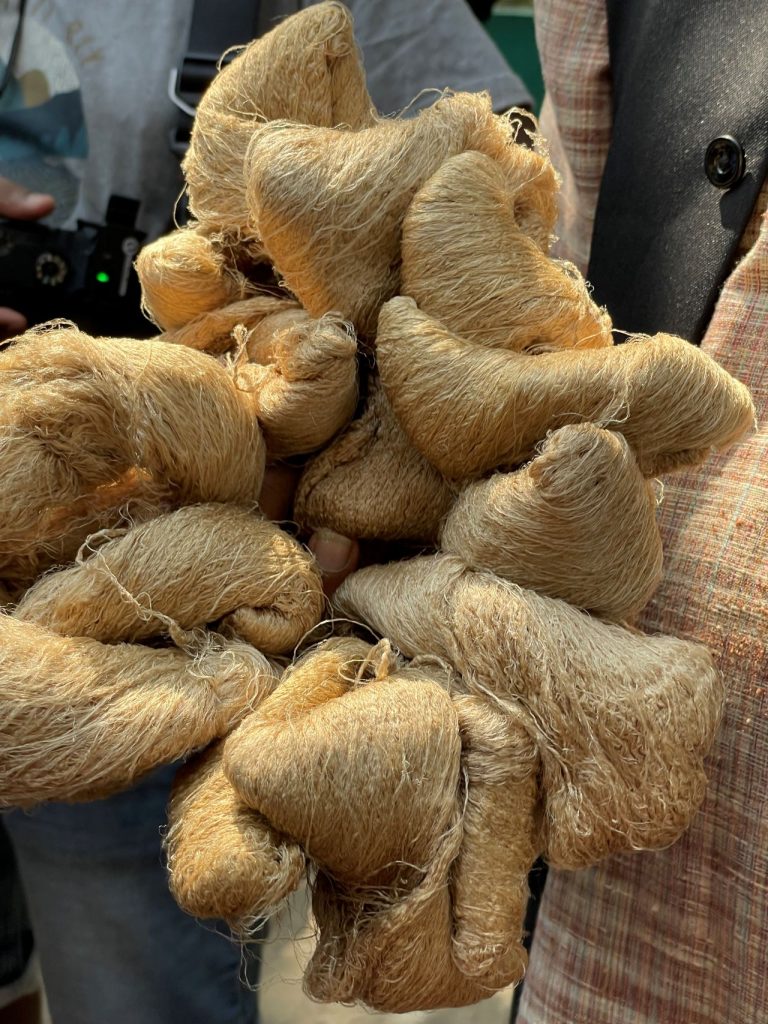
We visited two villages – Gopalpur and Antia, the former is a cluster of weavers who have been around for over 400 years and the latter has a cluster of women who have specialized in the art of crafting beautiful products with the widely grown golden grass also known as Kaincha locally.
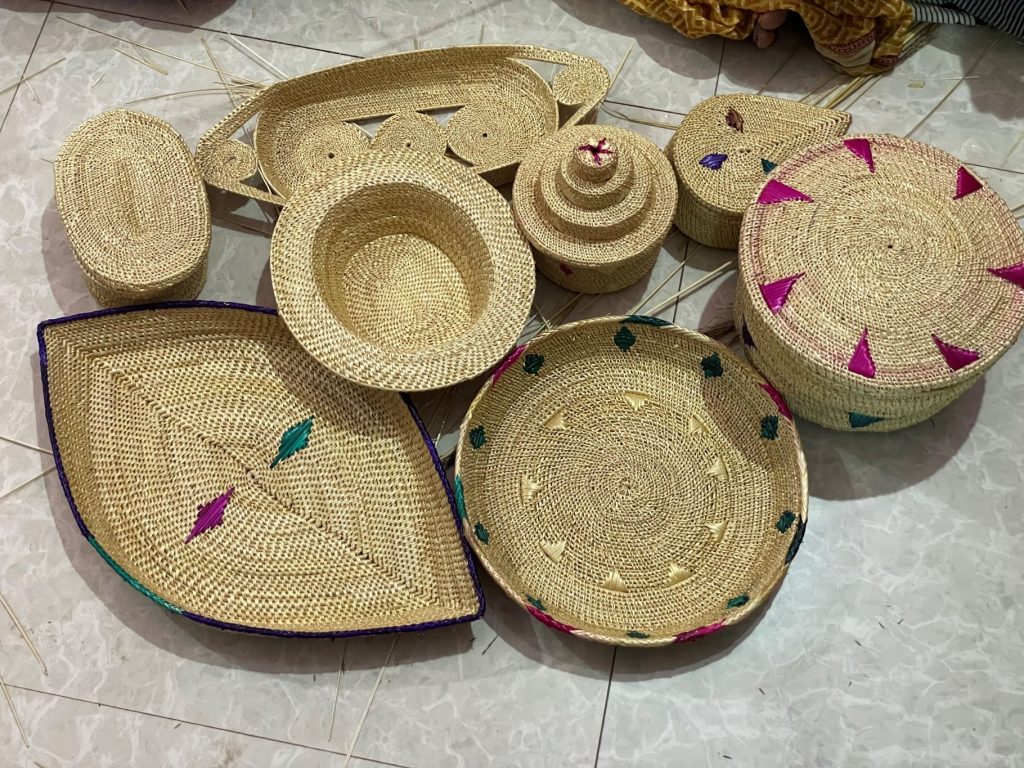
These villages are just an example of how arts and crafts and rural tourism can be developed and promoted in Jajpur in Odisha. Village walks, interactions with locals, and learning more about the arts and crafts and local traditions are experiences by themselves.
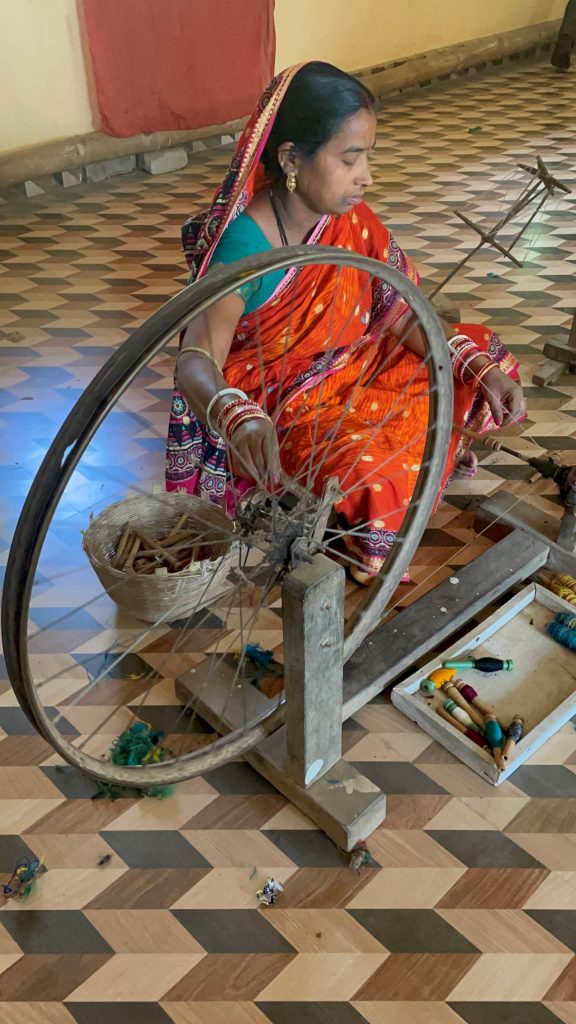
Gopalpur Tussar
Gopalpur Tussar is special and stands out distinctly for its weave, especially for tussar silks. The entire village has about 1700 registered weavers as the skill has been passed on from one generation to another, sometimes even seven generations. A walk inside this heritage village is an experience – to meet the weavers and understand the processes and techniques while you can even buy tussar silk sarees or dupattas or fabrics from the self-help groups and rural marketing communities as well.
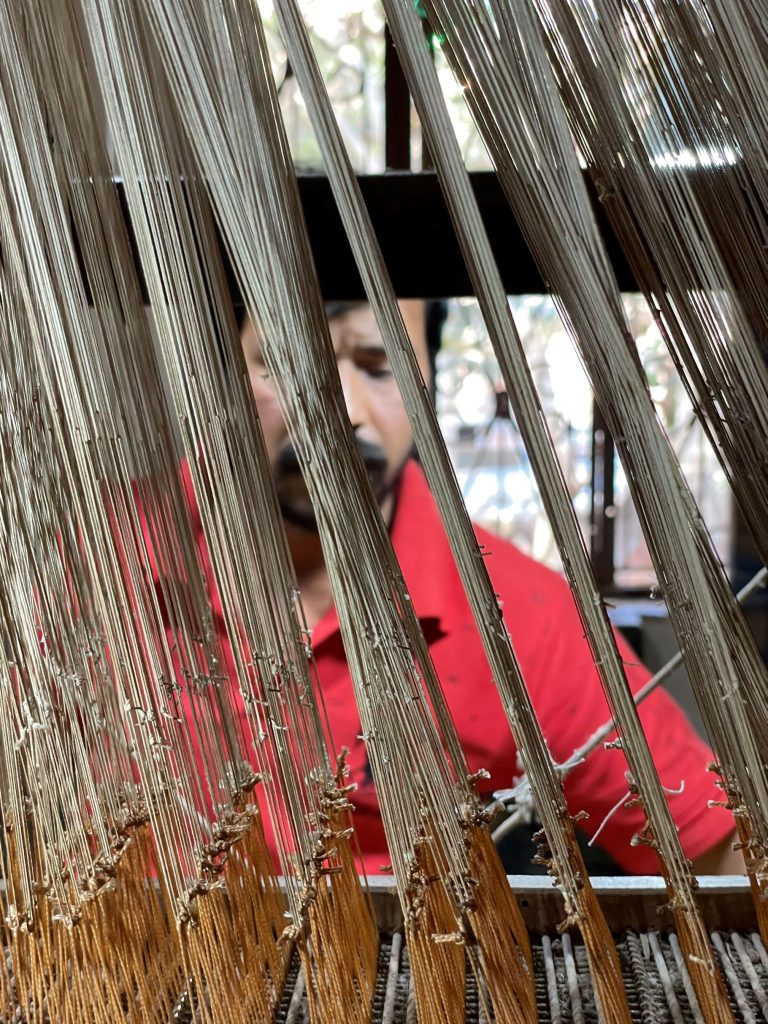
The village is also a treasure trove of other arts and crafts and forgotten musicians and musical instruments like Kendera and Khanjari. While the lost melodies echo through the lanes you can homes painted with murals depicting bright geometric patterns in a style called Jhoti or Chita, while there is a third style of painting called Muruja. More than the art, it’s the artists and artisans who steal your heart here as you can sit here and have conversations with the men, play with the kids and share a laugh with the women while appreciating their beauty and talent.

Jajpur Famous Food
You can’t go to Odisha and not have the delicious Chena Poda or the famous Pahala Rasgulla, which was originally offered as Kheer Mohana, one of the items in the menu of the “Bhog” for the triad deities at the Puri Jagannath Temple. In Jajpur this time I did try one of the most delicious local cuisines at one of the local eateries called Odiyanee Thali. We tried the local Thali with over 20 dishes. We also had a quick buffet in a smaller eatery which had some delicious vegetarian food as well. Here are some of the items that are considered Jajpur famous food, especially if you are a vegetarian
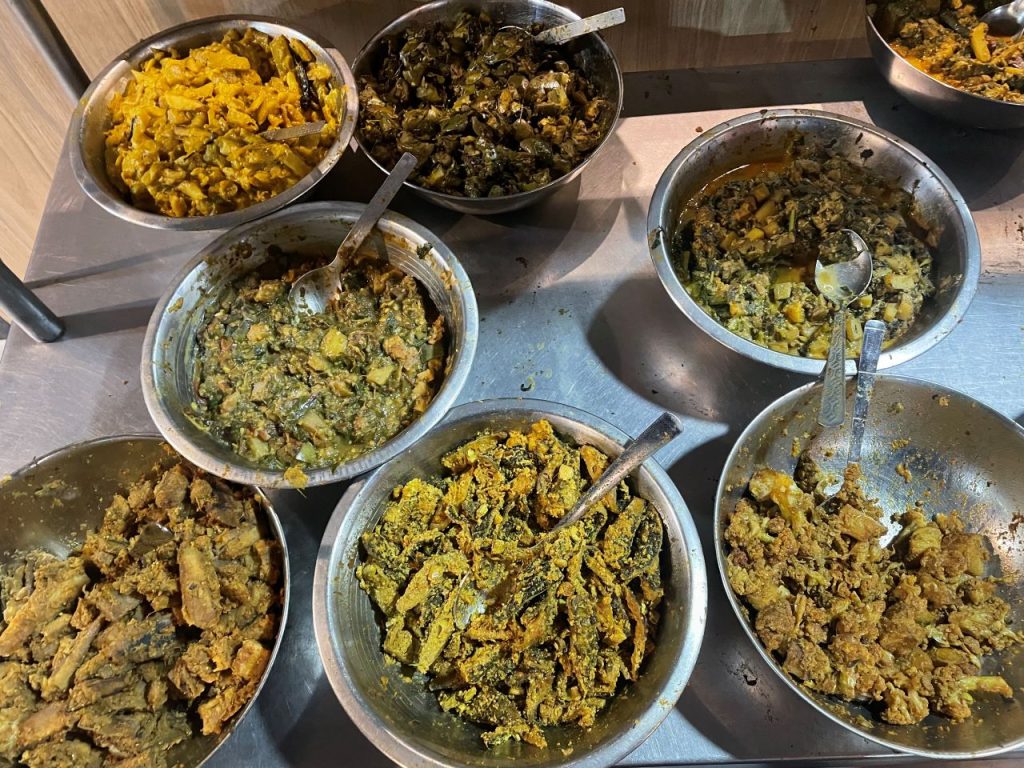
There was Badi Chura which is sun-dried lentil dumpling crumble with mustard oil seasoning. We also had a special daal or lentil called Dalma, which is prepared with local and seasonal vegetables and spices. Dahi Baigan, which is eggplant or brinjal cooked with spices. For some who is not a fan of brinjal, this was so delicious. There was a vegetable curry called Desi Ghanta Tarkari and Saga Muga, which is spinach cooked with dal and vegetables like yam and raw banana. Another specialty is Chhatu Poda which is a banana leaf-wrapped roasted paddy straw mushroom cooked with spices and curry paste. My favourite is the Ambula Rai, which is sun-dried Mango cooked in curd, mustard paste & jaggery with mustard seed tempering and Kakharu Fula bara that is deep fried pumpkin flower in Gram flour and Rice flour batter.
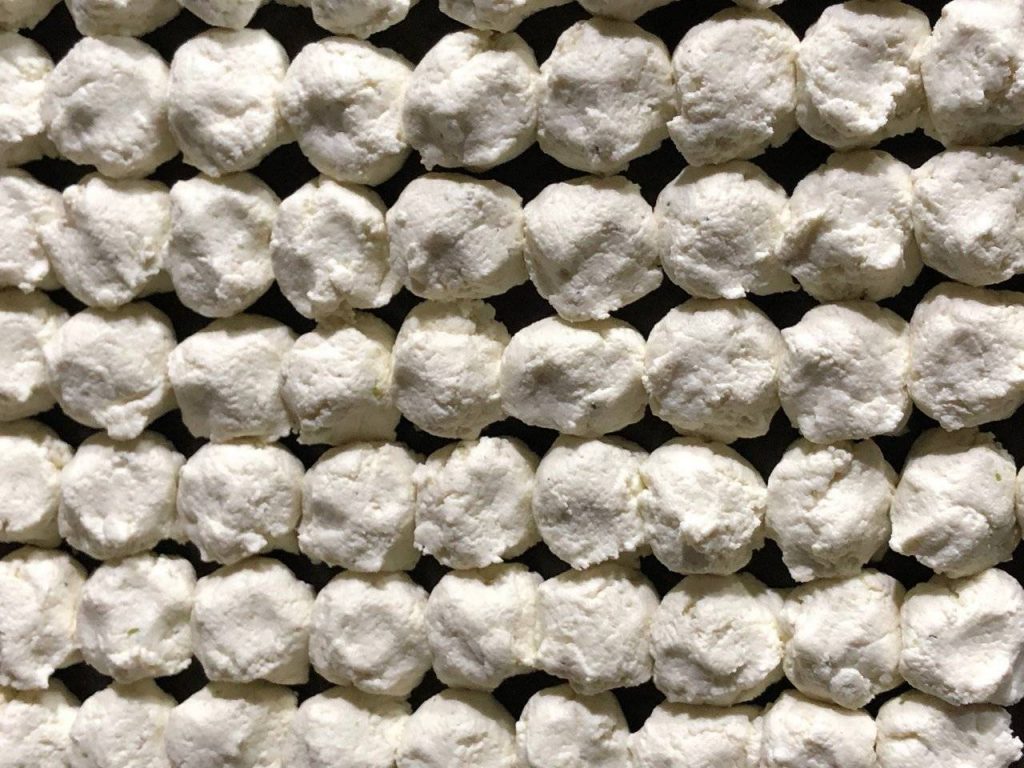
How to reach Jajpur
Jajpur is well connected by air, by train, and by road. The Biju Patnaik International Airport in Bhubaneshwar is about 100 km away and it takes a little more than two hours. Jajpur Road is the closest rail head as well. While Jajpur to Bhubaneshwar distance is a little more than 100 km, Cuttack to Jajpur distance is about 76 km . Best time to visit is winter during the months of October to March. You can explore Jajpur in three days.
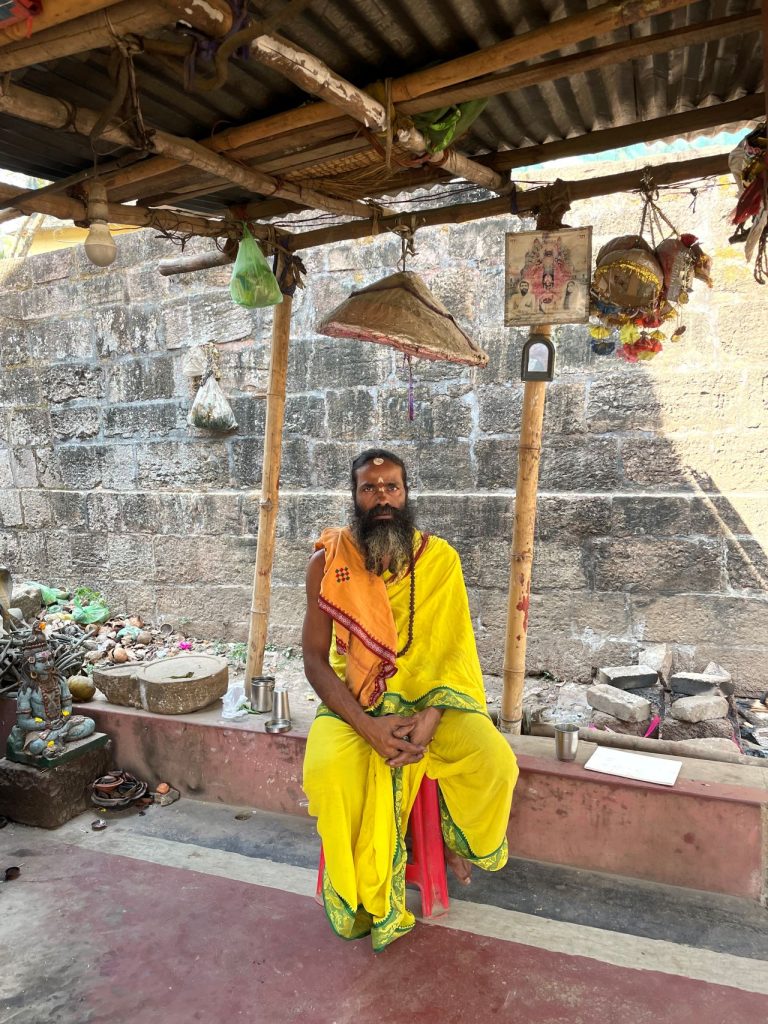
Where to stay in Jajpur
Jajpur has a variety of hotels, but mainly budget hotels. Jajpur town hotels are mostly in the budget or three-star category as of now but more are being developed in Jajpur District. There are a couple of five-star and four-star properties and we stayed in one of the best – Jajati Courtyard located near Jajpur Road and closer to the town. My trip was courtesy of the District Administration of Jajpur.
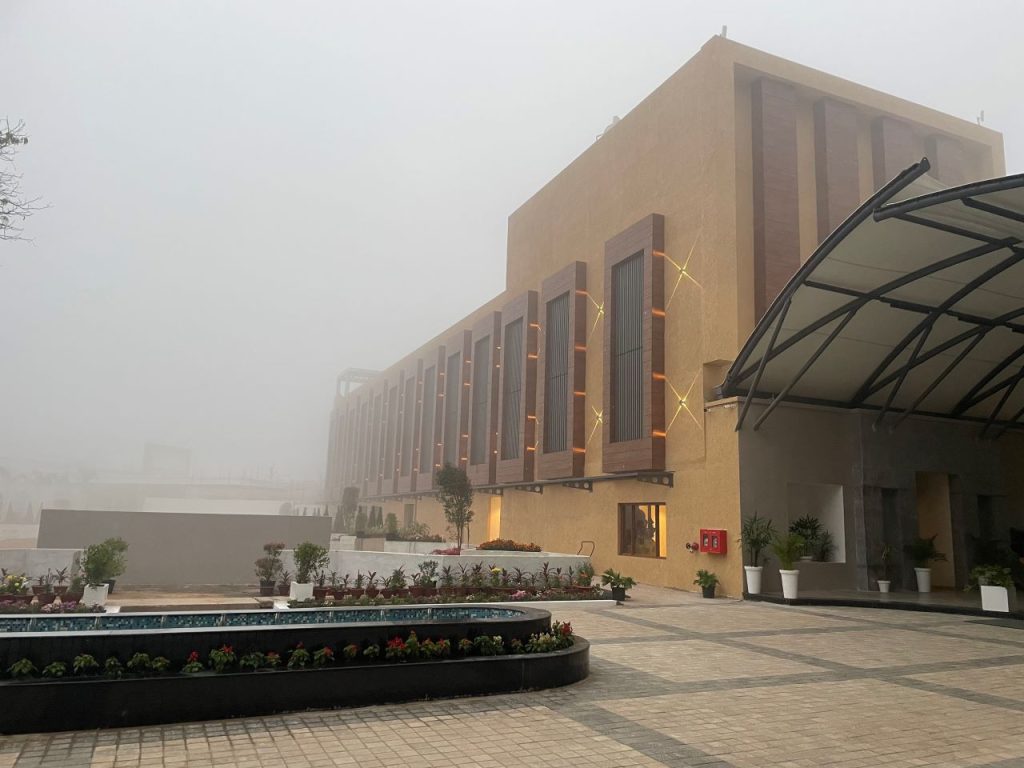
I was invited to Jajpur along with other media professionals for the Jajpur Mahotsav, a musical extravaganza and a festival featuring some of the top singers, actors and other celebrities of Bollywood like Sunidhi Chauhan, Shreya Ghoshal, Sona Mohapatra, Ayushman Khuranna and the brilliant Amit Trivedi among others. The event was one of the best I had attended and we spent the day exploring Jajpur District and the evenings at Jajpur Mahotsav.
